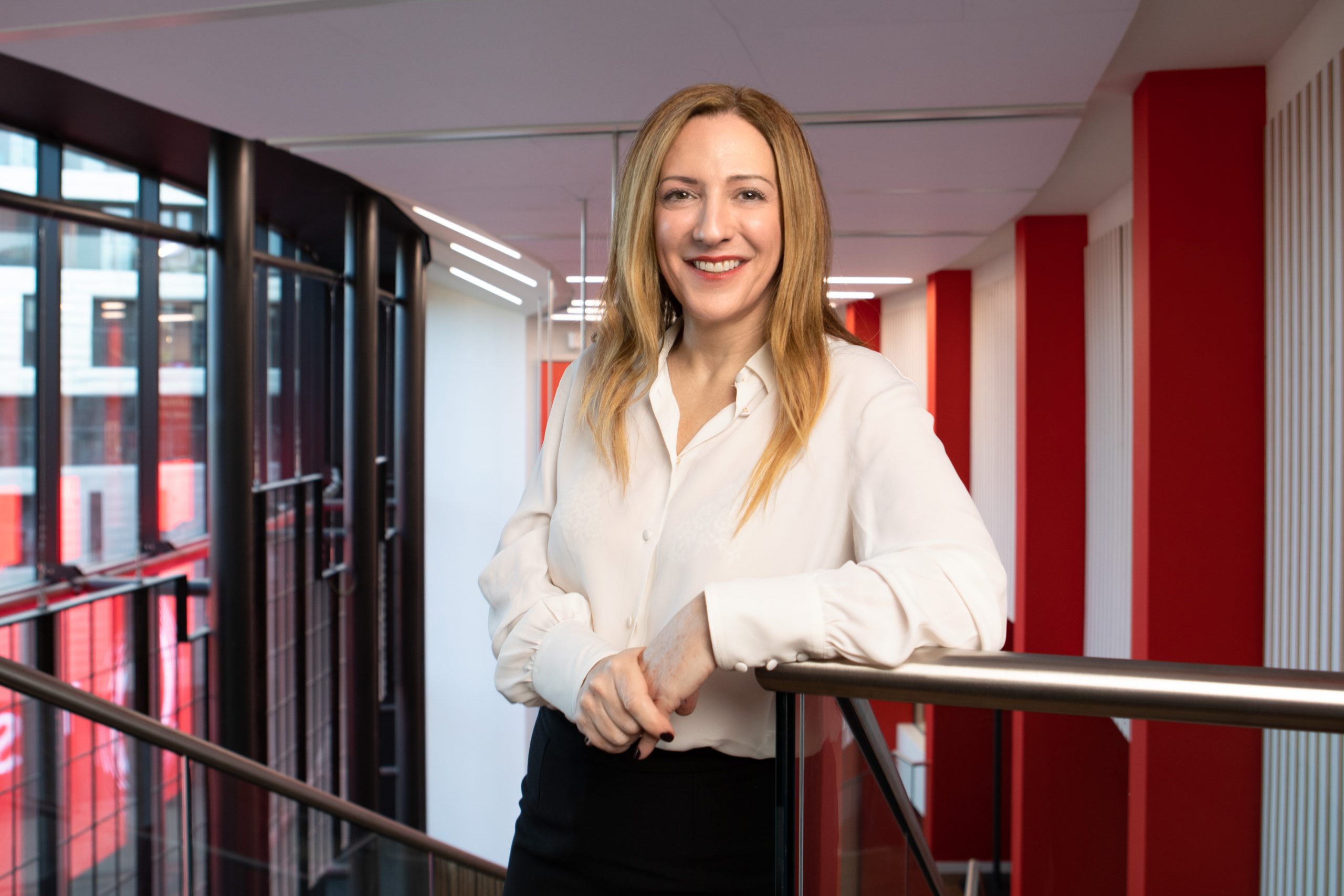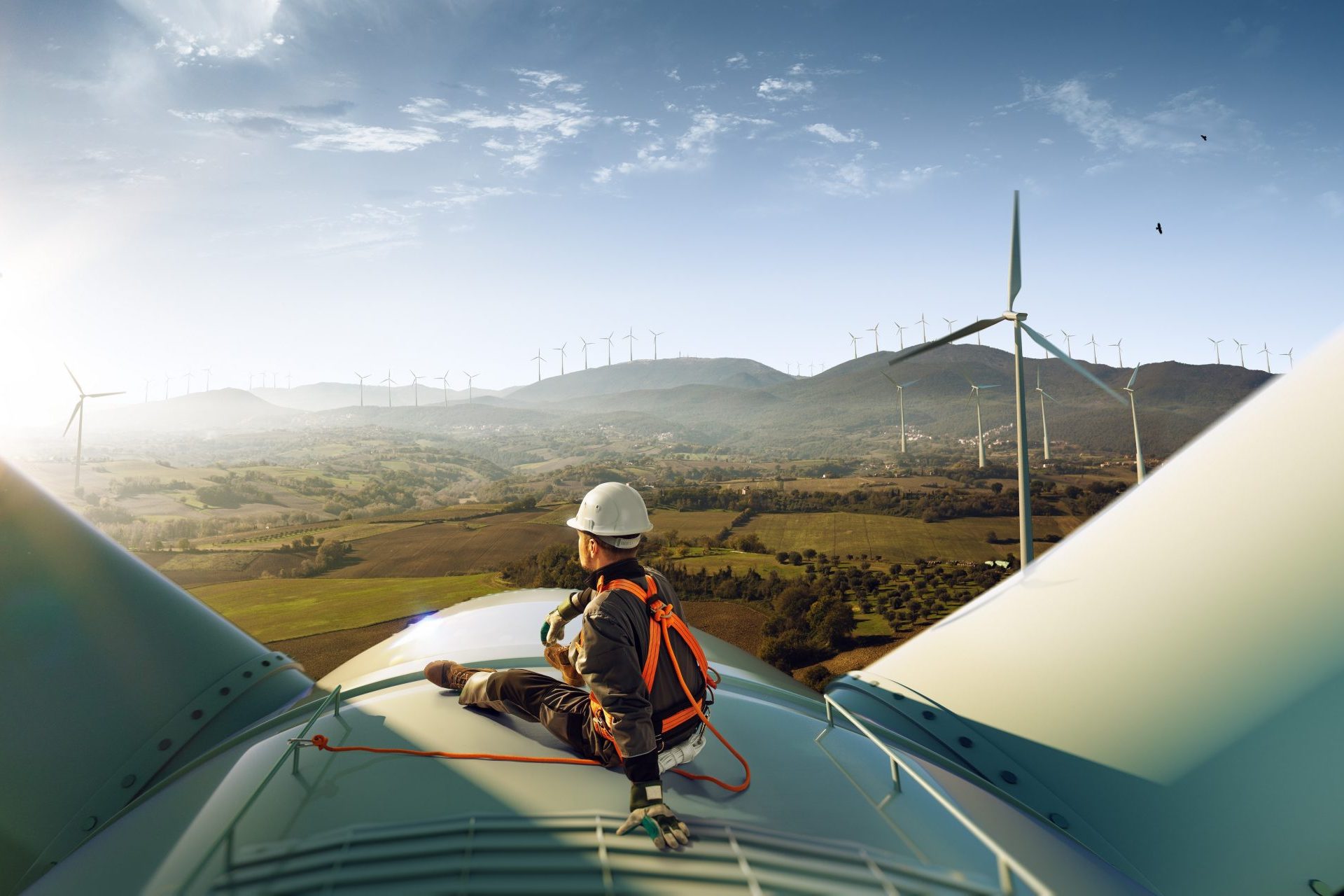Ahmed Essam, Vodafone's UK CEO, outlines the company's environmental targets, explains why they're credible, and reflects on the journey so far on the road to net zero.
The story so far
Sustainable thinking isn’t new for us, it’s woven into our purpose as a business – we launched our first sustainability report back in 2001. Now Vodafone UK has committed to reaching net zero operations by 2027 – a really ambitious target. Group-wide the target is by 2040.
And we’re looking to reduce the carbon emissions produced by our suppliers, too. Our target is to half emissions from our supply chain by 2030.
Across Europe, including in the UK, we’re now powered by 100% renewable electricity from certifiable sources – we already have power purchase agreements with two UK windfarms.
That last point about certifiability is important – our green claims and net zero commitments are credible because they’ve been developed in partnership with The Carbon Trust and endorsed by the Science Based Targets Initiative.
They’re stretching but achievable, even in a world where the demand for our voice, data and IoT services is rising every day.
Energy efficiency, energy generation
We spend millions upgrading our network, and when we do, we make sure we use the most energy-efficient equipment.
Switching to Lithium-Ion batteries; using low-energy LED lighting; and cooling our substations and data centres with IoT-managed natural, rather than mechanical, cooling systems, are just a few examples of how we’re trying to minimise our energy usage.
One recent trial of a new Ericsson 5G radio found that it used 43% less energy on average each day. We plan to roll out 1,500 such low-power 5G units over the coming year.
We’re also looking to increase on-site generation using a range of renewable energy sources, from solar panels to wind turbines, and we’re ‘greening’ our fleet – about 60% of our vehicles are now either fully electric or plug-in hybrid electric.
Waste not, want not
We’ve also been bearing down ruthlessly on waste in the UK: reusing, recycling or reselling 100% of our redundant network equipment. Globally, we’ll achieve this goal by 2025.
We’re also trying to encourage longer device life through repair and reuse programmes, and we’ve donated more than 7,500 devices to families in need through our charity partner, Barnardo’s.
From April 2022, we’ll be rolling out Eco-SIMs throughout the UK – SIM cards made from 100% recycled plastic – and we already support digital eSIMs for a growing number of compatible devices.
Helping customers, too
As you can see, we’re doing a lot to reduce our own carbon footprint. But we want to help our customers reduce their carbon footprints, too. We’re all in this together.
And we believe our technologies can play a vital role in this.
Our business customers have already been benefiting from our Internet of Things (IoT) sensors and connections. More than half our 123 million IoT connections directly enable customers to reduce their emissions.
For example, Our Smart Building product enables customers to optimise heat, light and cooling systems in their buildings, bringing down costs and reducing energy usage by up to 30%.
Telematics enables fleet managers to shorten delivery routes, cut idling times and reduce fuel consumption through intelligent route planning.
And our 5G connectivity is helping UK Power Networks trial smart substations, which will enable the energy distribution company to integrate more renewable energy providers into their network and reduce costs.
We’ve pledged to help our business customers reduce their carbon emissions by 350 million tonnes by 2030 (from a 2020 baseline).
This isn’t fantasy, it’s real and achievable. Our recent report, Connecting for Net Zero, found tech such as IoT and 5G in agriculture, manufacturing and transport could help reduce the UK’s greenhouse gas emissions by 4% – every year.
Monitoring the impact
Our technologies don’t just help us and our customers reduce carbon emissions, they also help monitor the impacts of climate change.
For example, our IoT Forest project – in partnership with Defra and Forest Research – is monitoring tree growth and researching the role trees play in tackling climate change.
We help the Environment Agency monitor flood hotspots and set up emergency communications in disaster areas.
And our IoT sensors are now measuring coastal erosion on the Jurassic Coast as part of the Government-backed 5GRuralDorset project.
My hopes for the future
We need to address climate change urgently – that much is clear. Time is running out.
At COP26, I had the pleasure of meeting some important politicians from around the world, hearing their presentations and speeches, and engaging personally with them. It’s always educational and it was inspirational, too.
But most importantly, I had a call from my daughter, who told me she was really happy and proud I was at COP26 representing Vodafone and representing the industry, talking about what we can do to address this issue.
This tells you that our children, our customers, our partners, they’re all interested. It’s not a business topic, it’s a topic for everybody. It’s a topic about our future.
Together, we really can make a difference and heal our planet for future generations to enjoy.
Stay up-to-date with the latest news from Vodafone by following us on Twitter and signing up for News Centre website notifications.
![Nicki-Lead_image[OPTIMISED]](https://www.vodafone.co.uk/newscentre/app/uploads/2023/10/Nicki-Lead_imageOPTIMISED.jpg)

![White smartphone with screen from green leaves[Adobe Stock]](https://www.vodafone.co.uk/newscentre/app/uploads/2024/04/White-smartphone-with-screen-from-green-leavesAdobe-Stock.jpg)

![Falling Dripping Water Drop[Adobe Stock] Falling Dripping Water Drop[Adobe Stock]](https://www.vodafone.co.uk/newscentre/app/uploads/2024/04/Falling-Dripping-Water-DropAdobe-Stock.jpg)
![1-happy woman with cleaning agent and phone[Adobe Stock] stock image of a woman using a smartphone while wearing rubber kitchen gloves and holding a spray bottle](https://www.vodafone.co.uk/newscentre/app/uploads/2024/04/1-happy-woman-with-cleaning-agent-and-phoneAdobe-Stock.jpg)

![Young Woman Cooking in the kitchen edited [Adobe Stock] stock image of a woman preparing vegetables in a kitchen](https://www.vodafone.co.uk/newscentre/app/uploads/2023/12/Young-Woman-Cooking-in-the-kitchen-edited-Adobe-Stock.jpg)
![Smart farm, agriculture concept, farmer use data augmented mixed virtual reality integrate artificial intelligence[Adobe Stock]](https://www.vodafone.co.uk/newscentre/app/uploads/2023/12/Smart-farm-agriculture-concept-farmer-use-data-augmented-mixed-virtual-reality-integrate-artificial-intelligenceAdobe-Stock.jpg)
